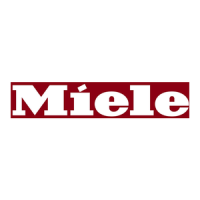Microwave defrosting, reheating and cooking
88
Chart for reheating food
Quantity
[W]
[min:sec]
[min]
1)
Drinks
2)
Coffee (drinking temperature 60–
65 °C)
1 cup (200 ml) 1000 W 0:50–1:10 –
Milk (drinking temperature 60–65 °C) 1 cup (200 ml) 1000 W
1:00–1:50
3)
–
Water, bringing to the boil 1 cup (125 ml) 1000 W 1:00–1:50 –
Baby bottle (milk) approx. 200 ml 450 W
0:50–1:00
3)
1
Mulled wine, grog (drinking
t
emperature 60–65 °C)
1 glass (200 ml) 1000 W 0:50–1:10 –
Food
3)
Baby food (room temperature) 1 jar (200 g) 450 W 0:30–1:00 1
Cutlets, cooked 200 g 600 W 3:00–5:00 2
Fish fillet, cooked 200 g 600 W 3:00–4:00 2
Roast meat in gravy 200 g 600 W 3:00–5:00 1
Side dishes 250 g 600 W 3:00–5:00 1
Vegetables 250 g 600 W 4:00–5:00 1
Gravy 250 ml 600 W 4:00–5:00 1
Soup / casserole 250 ml 600 W 4:00–5:00 1
Soup / casserole 500 ml 600 W 7:00–8:00 1
Micr
owave power / Reheating duration / Standing time
1)
Allow the food to stand at room temperature for a few minutes to enable the heat to
spread evenly throughout the food.
2)
When heatin
g liquids, milk, sauces etc, using microwave power, the boiling point of the
liquid may be reached without the production of typical bubbles. The liquid does not boil
evenly throughout. This so-called 'boiling delay' can cause a sudden build-up of bubbles
when the container is removed from the oven or shaken, which can lead to the liquid boiling
over suddenly and explosively. To avoid this, always wait a minimum of 20 seconds before
removing the container from the oven and place a suitable glass rod or utensil into the cup
or glass when heating liquids.
3)
Dur
ations apply for food with an initial temperature of approx. 5 °C.
For food which is not normally stored in the fridge an initial temperature of approx. 20 °C is
assumed.
With the exception of baby food and delicate sauces, food should be heated to a
temperature of 70–75 °C.

